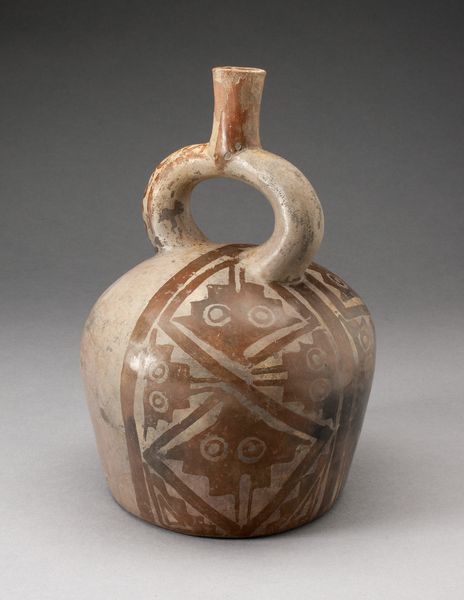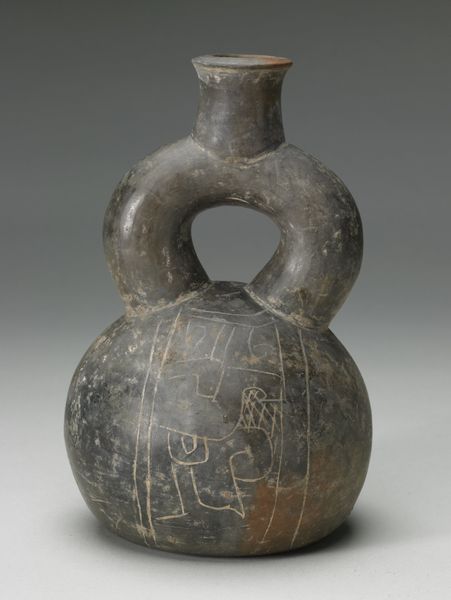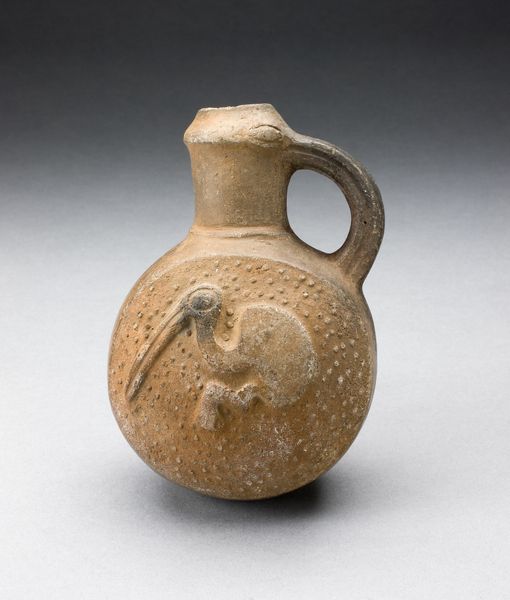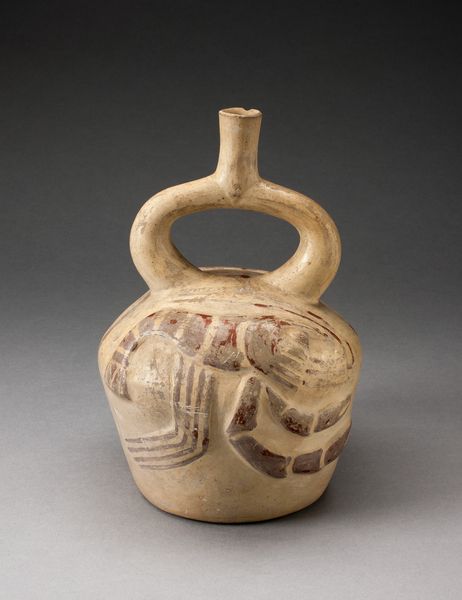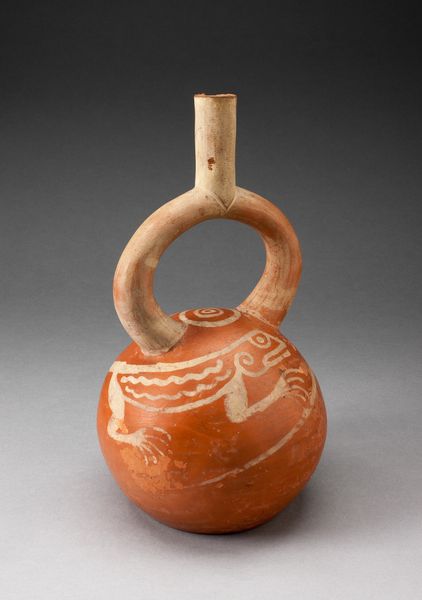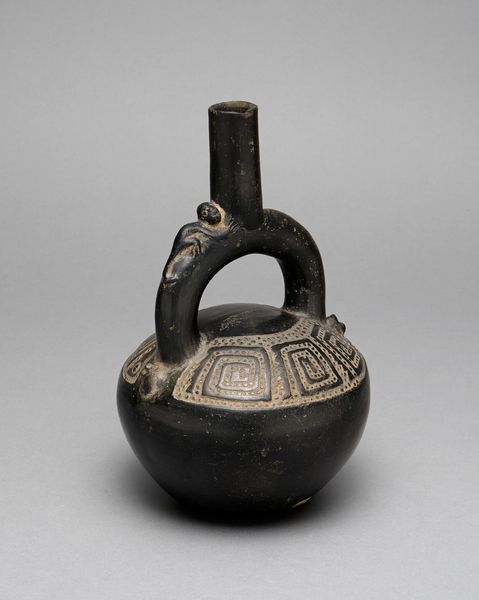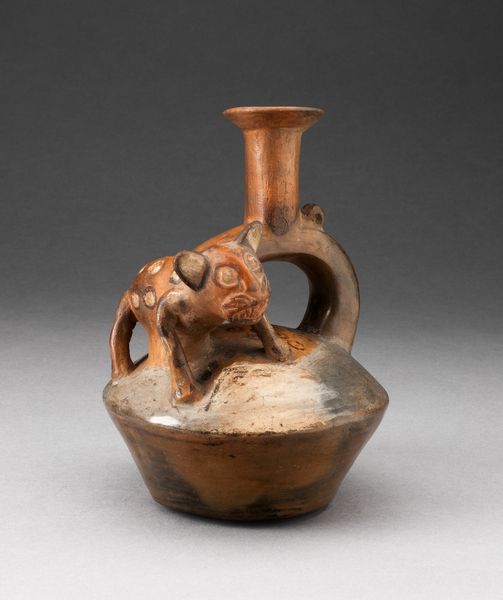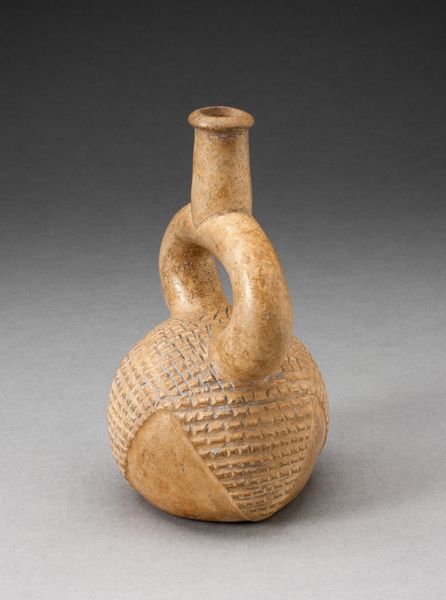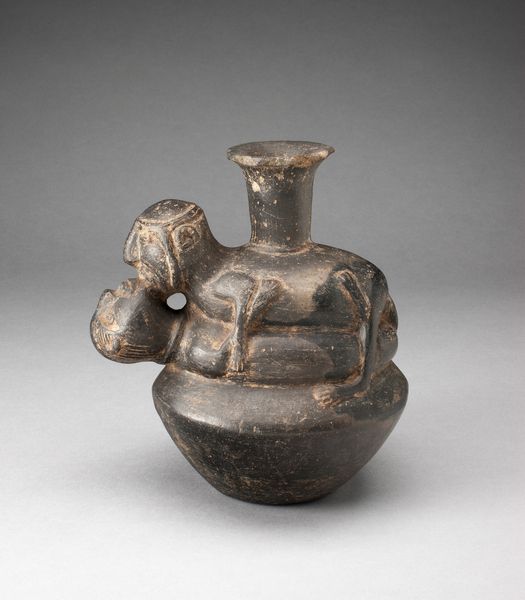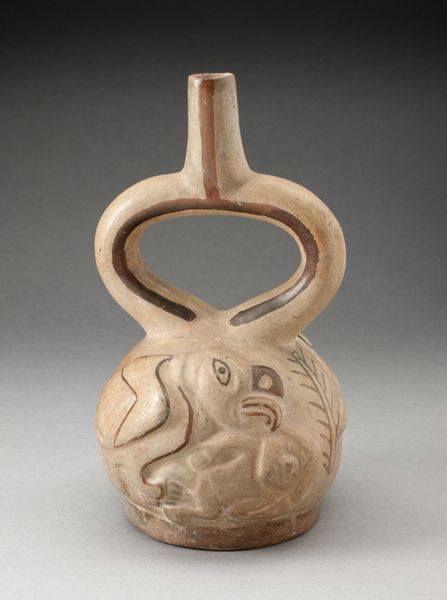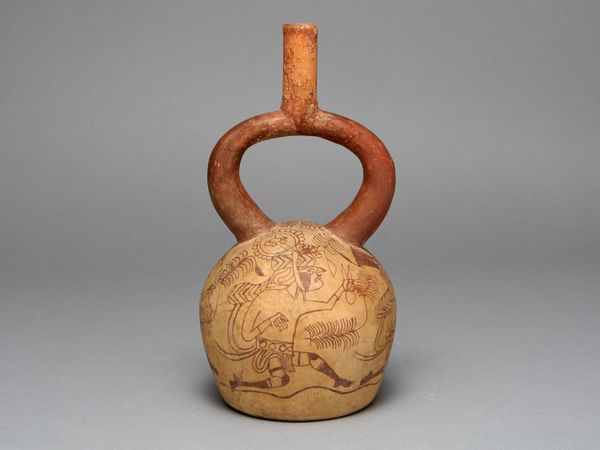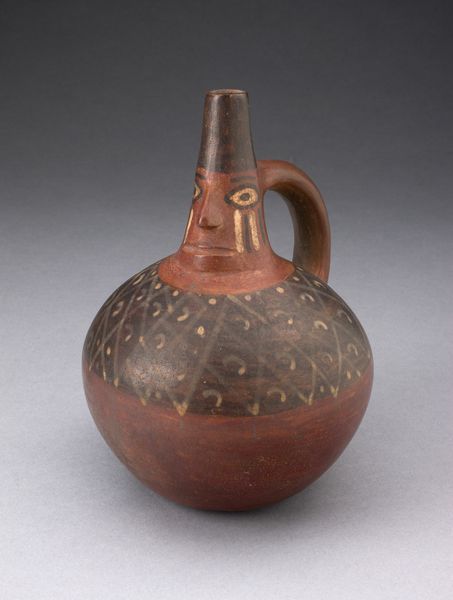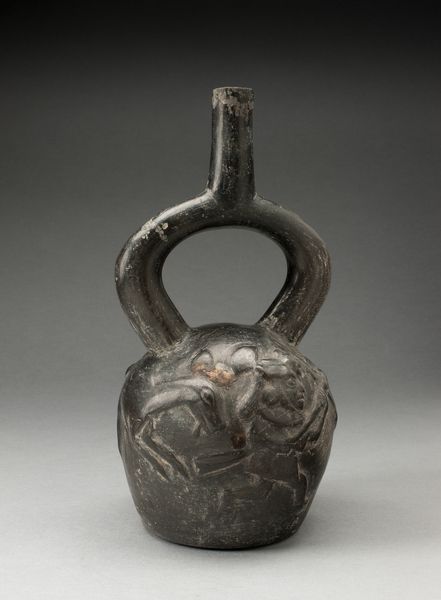
Stirrup Spout Vessel with Raised Geometric Scroll Motif c. 500
0:00
0:00
ceramic, sculpture
#
ceramic
#
form
#
geometric
#
sculpture
#
ceramic
#
indigenous-americas
Dimensions: H. 14.6 cm (5 3/4 in.)
Copyright: Public Domain
Curator: Here we have a ceramic Stirrup Spout Vessel, dating back to approximately 500 CE. It comes from the Chavín culture and is currently housed at The Art Institute of Chicago. Editor: The monochrome finish is quite striking. It feels elemental, grounded. The form is so simple, a sphere capped by this unusual looped handle – functional yet so aesthetically driven. Curator: Indeed, the "stirrup" spout is a distinctive feature. While we call it a vessel, it served far more than utilitarian needs. Such pottery played key roles in rituals and ceremonies, connecting to power and belief. Editor: I am also intrigued by the geometric scroll motifs around the vessel's body. It's all formed from humble clay, transforming under skilled hands to carry visual complexity. I'm always fascinated by how artists take earth, water, fire—elements accessible to all—and craft it into meaningful objects. What part did the process play in its role in these ceremonies? Curator: Absolutely. Craft production during the Chavín period was deeply enmeshed with the socio-political landscape. Elite artisans controlled the making, distribution, and, therefore, also the meaning associated with it, as well as how its value was spread amongst their followers. That is how art reinforced hierarchies. Editor: You know, noticing the scale and how light touches its surface reminds me how material objects command presence. These ceramic items weren't mere decorations; they had a role in forming and reforming the society around them. They are there for consumption, both physically and intellectually. Curator: I completely agree. Its continued presence in our collections speaks volumes about the impact that art possesses to both shape the people who created it, but the audiences who appreciate the vessel, today. Editor: Reflecting on it now, it’s almost as though these craftspeople anticipated us, making space for contemplation centuries into the future.
Comments
No comments
Be the first to comment and join the conversation on the ultimate creative platform.
